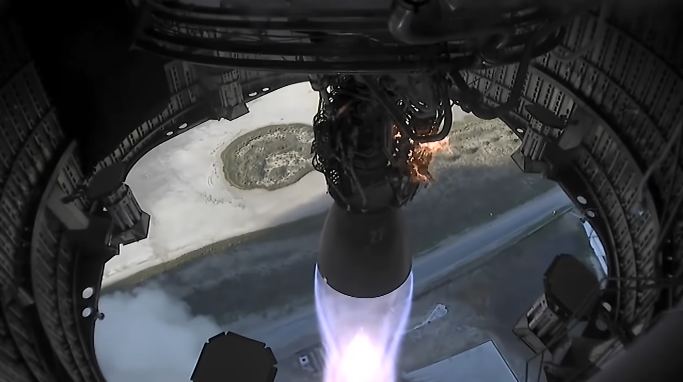Yesterday (on Tuesday, August 4th), ground crews at the SpaceX launch facility in Boca Chica, Texas, accomplished a major milestone. After 11 months of prototyping, testing, and more than a few explosions, the fifth Starship prototype (SN5) successfully completed a 150 meter (~500 ft) hop test and landed safely again. This latest test puts SpaceX on track towards full-scale orbital testing of their future launch vehicle.
To put it mildly, it has been a long and bumpy road for SpaceX, which spent the last eleven months regularly testing its prototypes to the point of failure. It all began shortly after the company established a launch facility at Boca Chica, built a miniature prototype of the Starship design (the Starship Hopper), and conducted a series of tethered tests using their new Raptor engine.
This was followed by an untethered hop test that saw the Starship Hopper similarly reach an altitude of 150 meters with a single Raptor engine, traverse laterally, and then safely land. Having tested the Raptor engine and shown that it could be integrated into a test vehicle, the ground teams at Boca Chica prepared to conduct tests with full-scale prototypes.
The ultimate goal here was to see if the Starship design could be made flight-worthy. The first step in this process was the cryogenic load test, where the full-scale prototypes would have their methane and liquid oxygen (LOX) tanks filled with liquid nitrogen to pressure-test them. Those that passed this milestone would be integrated with a single Raptor engine and put through a static fire test.
Unfortunately, this is where problems began. The first three prototypes, the Mk1, SN1, and SN3, all experienced blowouts during the cryogenic load test and were lost. The fourth prototype (SN4) managed to pass the cryogenic load test only to explode on the launch pad during the static fire test. The SN5, however, successfully completed both tests – on June 30th and July 30th, respectively.
Shortly after the static test was complete, Musk tweeted success and said that the first 150 m hop test would be happening soon. Based on two Notices to Airmen (NOTAMs) issued by the US Federal Aviation Administration (FAA) after the static fire test, SpaceX hoped to make the 150 m hop as early as Sunday, 08:00 am local time (06:00 am EDT; 09:00 am PDT), with backup attempts scheduled for Tuesday and Wednesday (Aug. 4th and 5th).
An attempt on Sunday was scrubbed due to unfavorable weather conditions (it’s currently hurricane season in South Texas). But on Tuesday evening, conditions were finally right for a hop attempt, which began 6:57:25 pm local time (7:57:25 EDT; 4:57:25 PDT) and ended about one minute later. A number of live feeds captured the event in real-time, and SpaceX has released a short video (shown below).
Within the space of about sixty seconds (a full-duration burn), the SN5 ascended to an altitude of 150 m (~500 ft), vectored its engine nozzle to move laterally, and then descended. As you can see from the interior camera, the SN5’s landing legs (a featured that first appeared on this prototype) extended and cushioned the landing.
With this test complete, SpaceX may try to make another hop before taking things to the next level. This will consist of integrating three Raptor engines into the SN5 (or a subsequent prototype) and attempting a 20 km (~12.5 mi) hop. When that’s done, SpaceX will be ready to begin towards an orbital flight, which will involve launching the Starship atop a Super Heavy first stage booster.
After a lot of work, a lot of waiting, and more than a few explosions, SpaceX is withing reach of its ultimate goal with the Starship and Super Heavy launch system. In a few years’ time, it could be making regular trips to space, sending cargo and crews to the Moon, and transporting the first space tourists (and even colonists) to Mars!
Further Reading: NASA SpaceFlight

